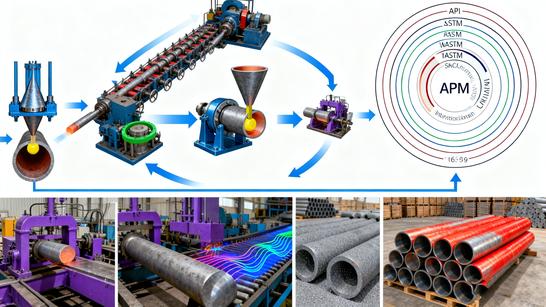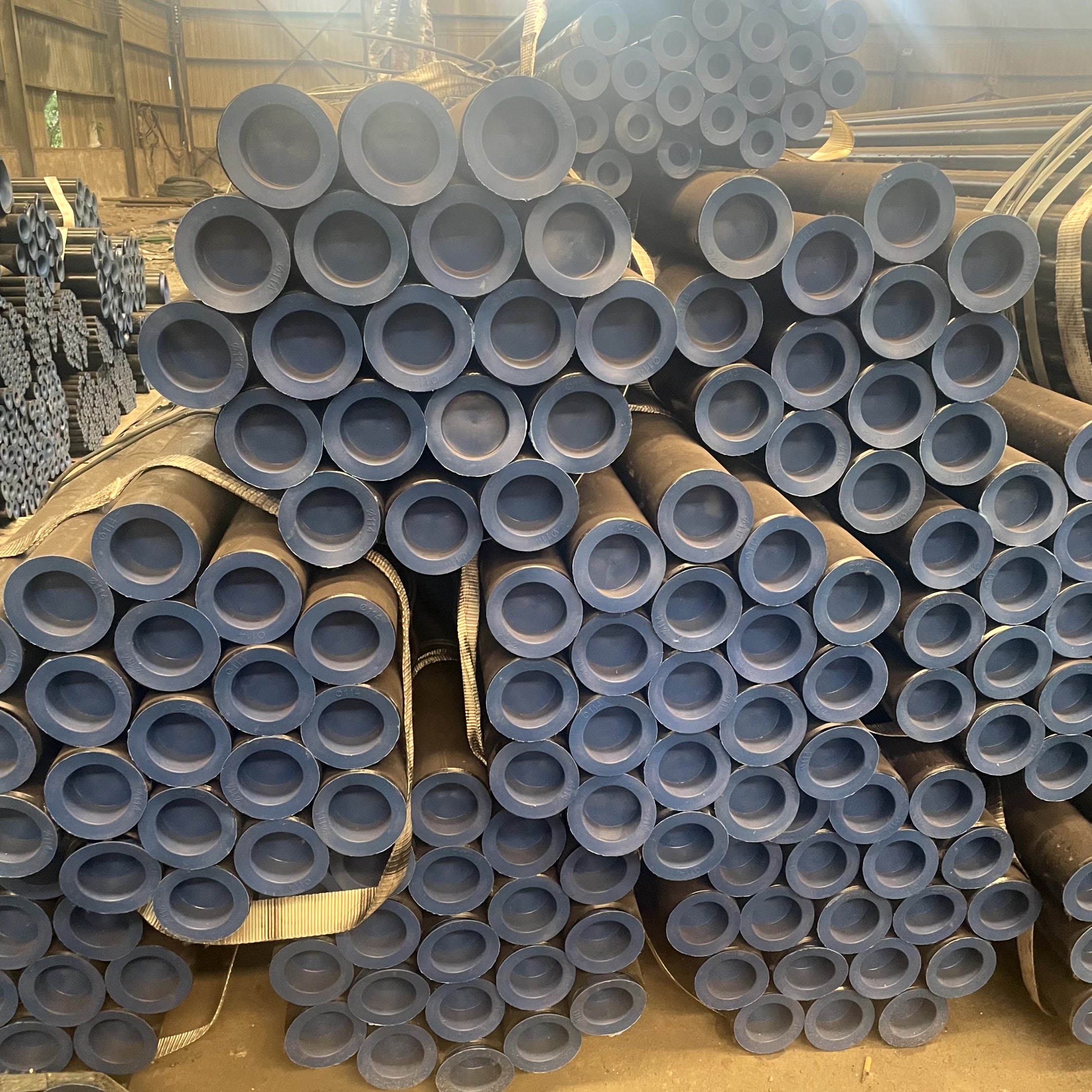In the world of industrial fluid transport and structural engineering, seamless steel pipes are the material of choice due to their superior strength derived from their seam-free structure. However, a critical decision remains during the procurement phase: should one choose Hot Rolled Seamless Pipe or Cold Drawn Tube?
These two types of pipes originate from the same mother tube, yet the final processing temperature dictates their dimensional accuracy, surface finish, mechanical properties, and cost. Understanding these fundamental differences is essential for ensuring project safety, optimizing costs, and meeting precise engineering specifications.
This guide serves as your professional selection tool, providing a detailed analysis of the key differences between hot rolled and cold drawn seamless pipes.
1. Manufacturing Process and Definition Differences
The distinction between hot rolled and cold drawn lies in whether the steel is plastically deformed above or below its recrystallization temperature.
| Feature | Hot Rolled Seamless Pipe | Cold Drawn Tube |
| Processing Temperature | High Temperature (Above $\approx 1000^\circ\text{C}$) | Ambient Temperature (Below Recrystallization Point) |
| Primary Material | Solid Steel Billet | Hot Rolled Finished or Semi-Finished Tube |
| Process Goal | Primarily to form the hollow body and initial dimension reduction. | Further reduction, enhancement of precision and surface quality. |
| Characteristics | High production efficiency, relatively lower cost. | Involves complex steps like pickling and lubrication; induces work hardening. |
2. Comparison of Key Performance Indicators
The hot rolled versus cold drawn process has a decisive impact on the pipe's final quality parameters.
2.1. Dimensional Accuracy and Tolerance
Cold Drawn Advantage:
Cold working is performed using dies, allowing for micro-level control, resulting in cold drawn tube possessing extremely high dimensional accuracy and tighter tolerance. This is crucial for precision mechanical applications like hydraulic systems and automotive parts, where exact dimensions are non-negotiable—hence the term Precision Pipe.
Hot Rolled Characteristic:
Since hot rolled seamless pipe is formed at high temperatures, the cooling process leads to thermal shrinkage, resulting in a wider fluctuation range for OD and WT, and thus looser tolerance.
2.2. Surface Quality
Cold Drawn Advantage:
The drawing process through the die results in a smooth, uniform surface finish free of mill scale (black oxide). Cold drawn tubes are the only choice when a bright finish is required or when the pipe will be used for precision machining.
Hot Rolled Characteristic:
Due to the high-temperature forming process, hot rolled seamless pipe usually has a rougher surface texture and is covered with a layer of mill scale (known as 'black pipe'). Additional surface cleaning is typically required before coating or welding.
2.3. Mechanical Properties
The cold drawing process induces work hardening in the steel pipe, leading to significant performance enhancements:
| Performance Metric | Hot Rolled Seamless Pipe | Cold Drawn Tube |
| Yield Strength | Lower | Higher (Due to work hardening) |
| Ductility (Elongation) | Generally better | Slightly lower (Requires post-treatment to recover) |
| Microstructure | Coarser grains, lower uniformity. | Refined grains, more compact structure. |
Cold drawn tubes often undergo subsequent heat treatment (annealing, normalizing) to relieve internal stresses and restore necessary toughness to meet stringent standards.
3. Application Selection Guide
The choice between hot rolled and cold drawn ultimately depends on your project requirements, budget, and specific application.
| Requirement Focus | Recommended Choice | Typical Applications |
| High Pressure Transport, Large Diameter, Cost-Effective | Hot Rolled Seamless Pipe | Oil & gas long-distance pipelines (API 5L), high-pressure boiler tubes, general structural support. |
| High Dimensional Precision, Fine Machining, Small Diameter | Cold Drawn Tube | Hydraulic cylinder barrels, automotive drive shafts, high-tolerance mechanical components, heat exchanger tubing. |
For example, large-diameter pipes used for oil field transport (API 5L) generally have a looser tolerance requirement, making hot rolled seamless pipe the more cost-effective choice. Conversely, manufacturing a hydraulic cylinder requires a precision pipe that must be cold drawn tube to guarantee the inner cylinder's dimensional accuracy and smoothness.
Professional Advice from Hebei Cangtie
As professional seamless steel pipe suppliers, Hebei Cangtie advises clients to weigh cost against performance based on actual project needs. Hot rolled seamless pipe offers excellent value for most basic industrial and high-pressure environments, while cold drawn tube is indispensable for high-end mechanical manufacturing due to its superior precision pipe qualities and strict tolerance adherence.
Regardless of whether your project demands high-pressure transport or high-precision mechanical tubes, we supply rigorously inspected hot rolled seamless pipe and cold drawn tube, offering customized heat treatment solutions to meet your exact specifications.
Return to the Seamless Steel Pipe Master Guide to explore global standards and applications in detail.





